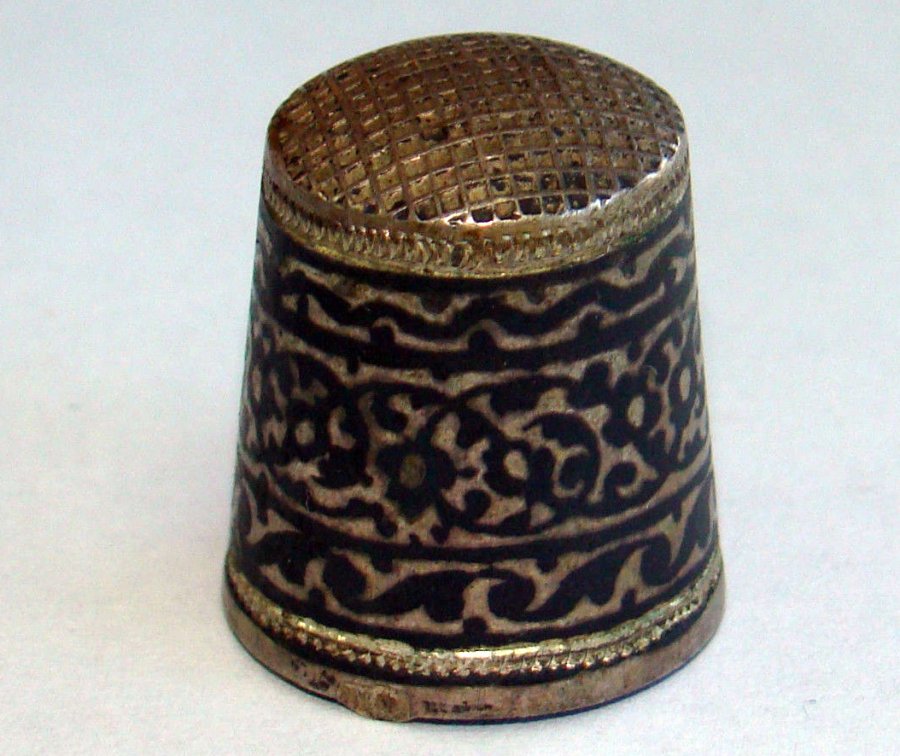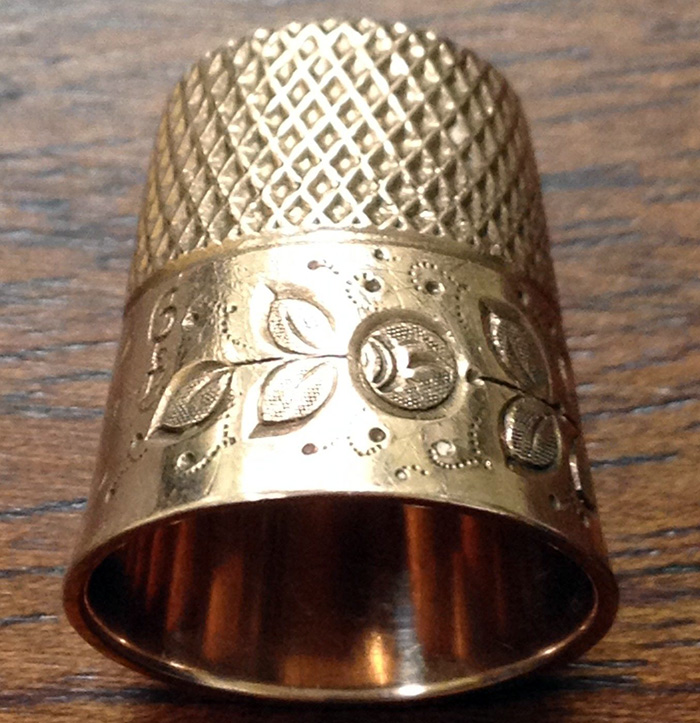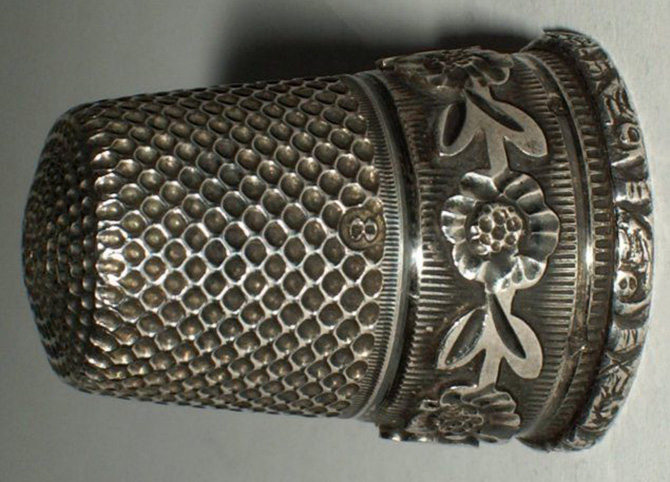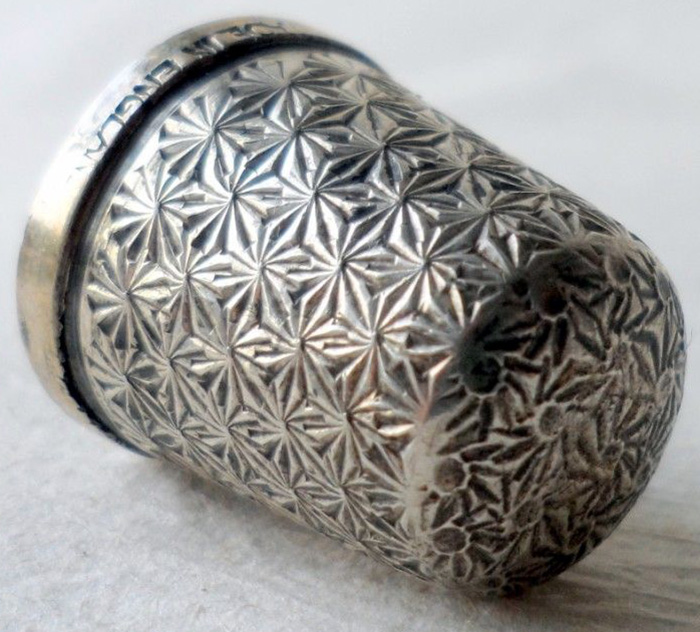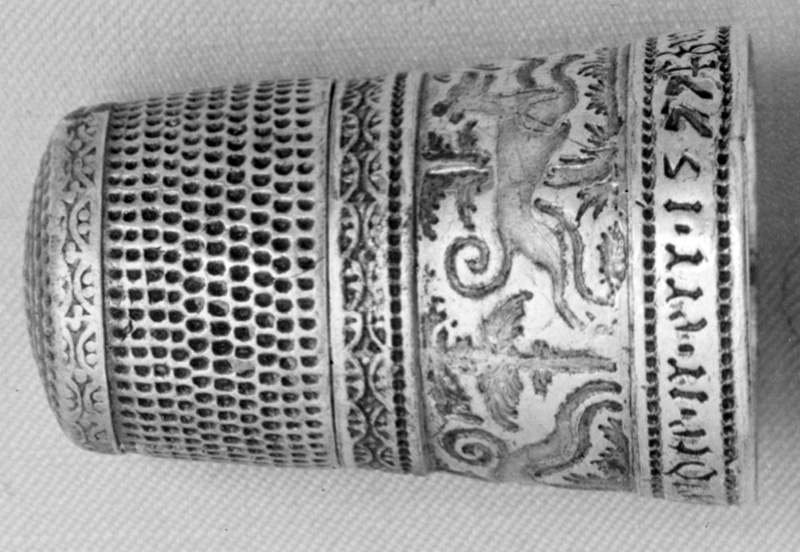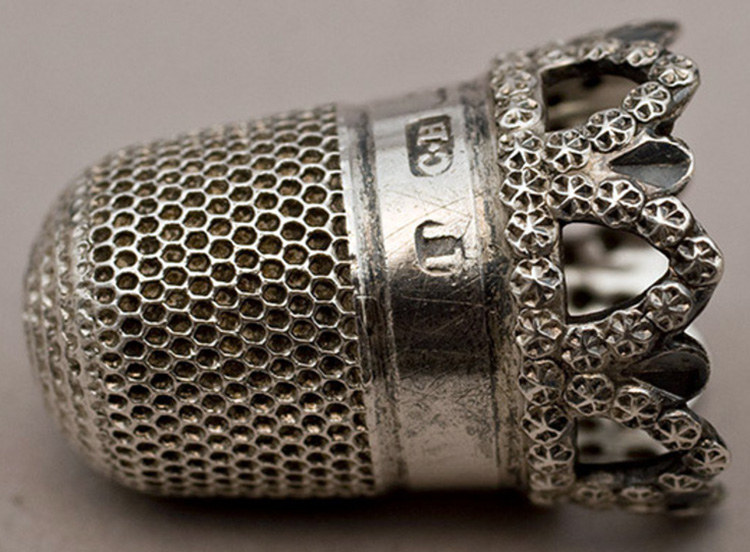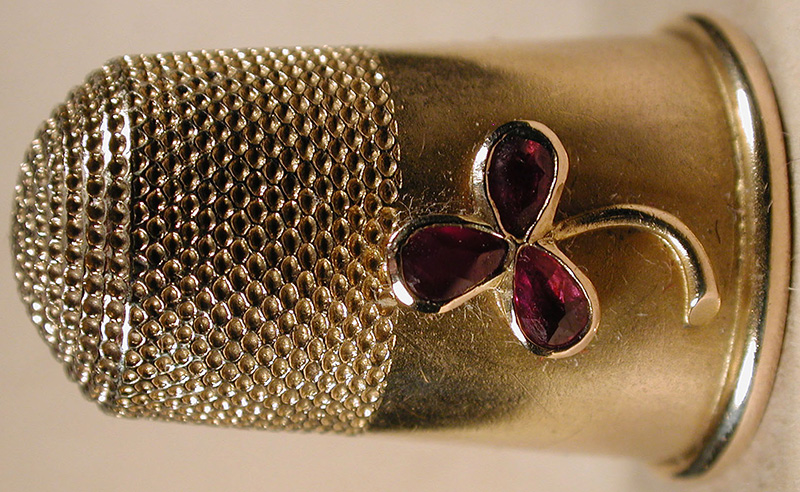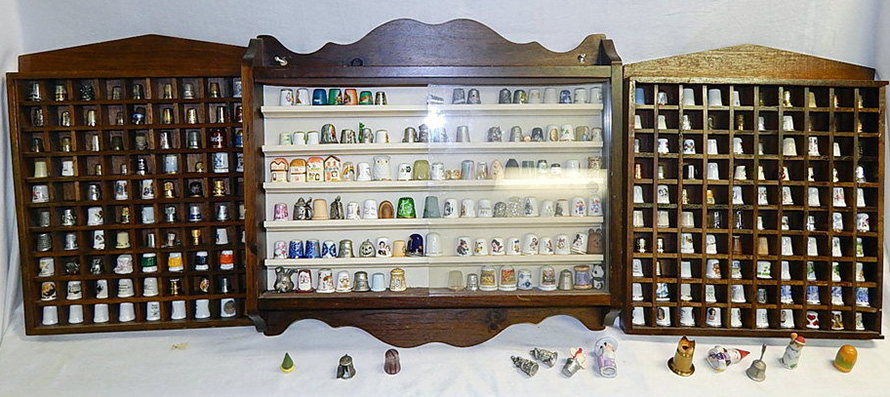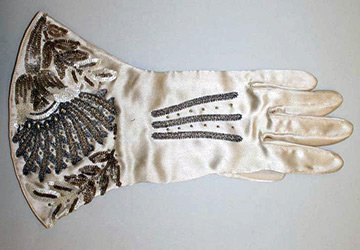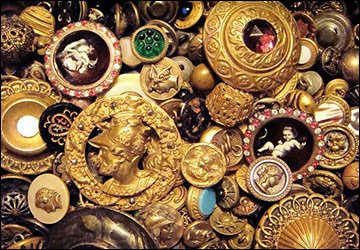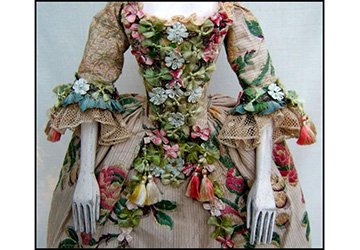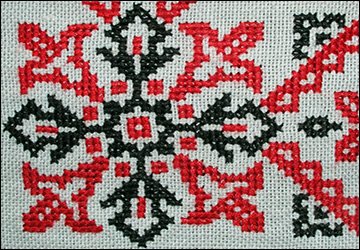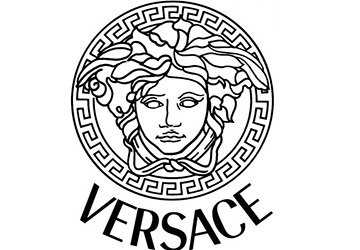Fashion history
How the thimble appeared - history of creation
Even if you do not sew your own outfits, and do not do embroidery, you still have a thimble. A faithful helper, a thimble, protects our fingers from being damaged by a needle. Any woman knows the need for this little helper, because we have to sew not only thin, but also rough materials, even sew a button on jeans, and then - we need to put on a thimble.
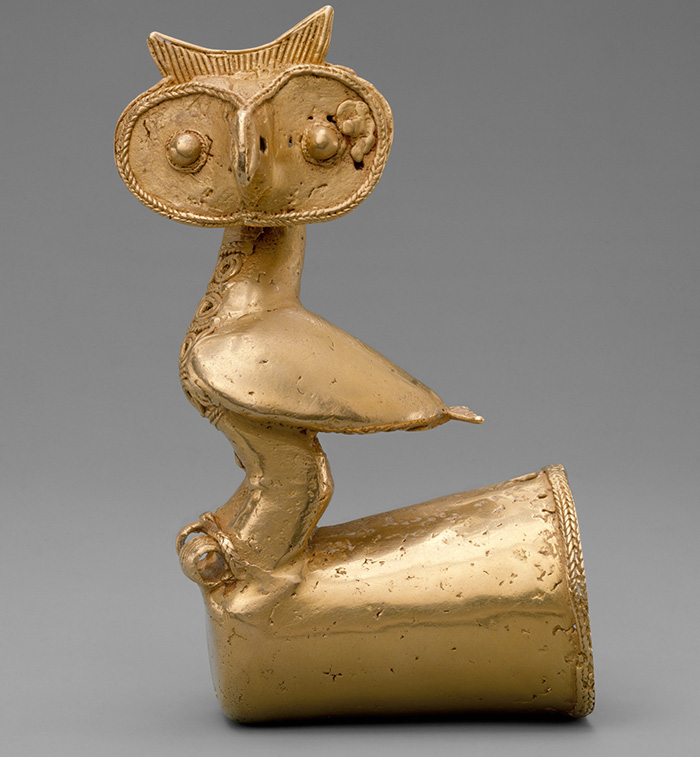
What were they like before, thimbles?
The earliest thimbles, preserved in various European countries, have flat heads. Such thimbles were in the 9th-10th centuries, they belong to the period of the Byzantine Empire. Small, round thimbles were brought to Europe from Asia a little later.
In the middle of the 14th century, cast, forged and hammered thimbles of bronze or copper were made in Europe. They are characterized by an acorn-shaped head. These specimens are kept in the Museum of Archeology in Madrid, where you can see a large collection of thimbles made by Spanish craftsmen. Bronze thimbles were made in Turkey. In those samples that were discovered by archaeologists, you can see the dates of their manufacture - from the 10th to the 16th century.
Anyone interested in art knows the period renaissance - from the 15th to the 16th centuries, which in the history of Italian culture was marked by a flourishing in all areas of artistic crafts. During this time, the tailor became a respected person in society.
But not only the sewing of clothes required certain tools for work, but also the needle lace that was being revived at that time, that is, lace sewn with a needle. This type of handicraft was especially developed in Venice. Thimbles were also made here, in the creation of which jewelers, artists, and bronze craftsmen took part. Thimbles were made of gold, silver, and from the 16th century they began to be made of brass (an alloy of copper and zinc). Craftsmen used their name and date of manufacture on thimbles made of precious metals. Thimbles were a necessary item in needlework, because then many were engaged not only in sewing, but also in embroidery.
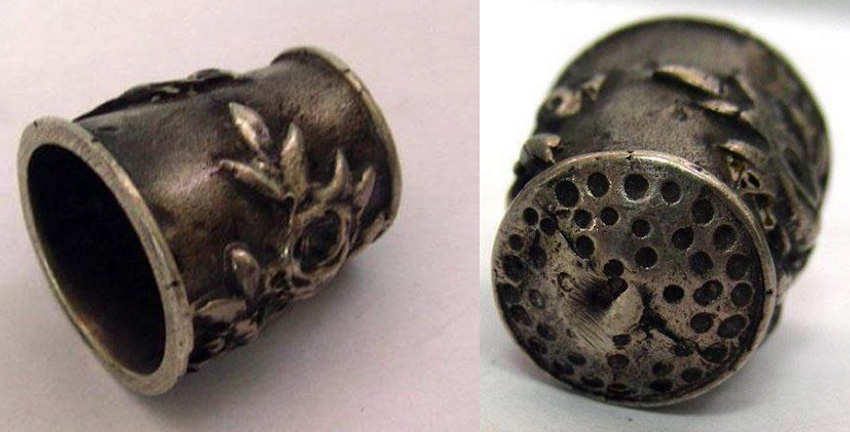
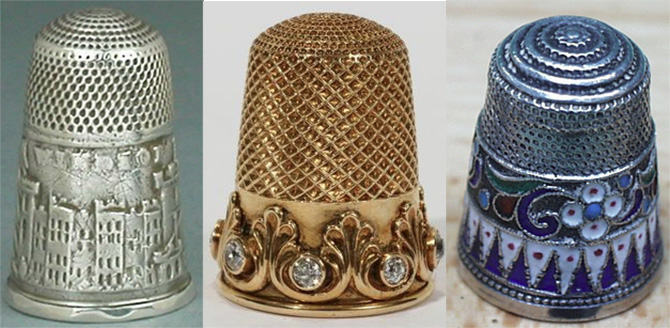
Everyone loved embroidery, and it adorned both men's and women's clothes. And not only women were embroidered, but also men. An example would be such a famous person as Cardinal Richelieu (1585-1642), who devoted all his free time to this occupation. That is why the thimble itself also became a work of art, since everyone needed it. He was decorated, admired.
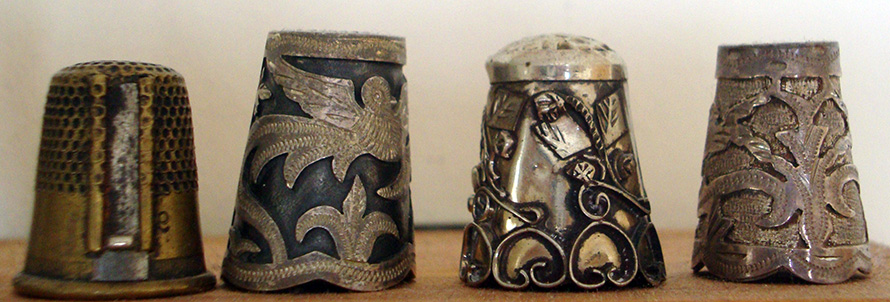
At the same time in England they took up thimbles in earnest. The Thread-needle factory was founded in Buckingham, where thimbles were also made among various sewing items. The British made them from brass, gold and silver, decorated them with small reliefs in the form of tiny circles, and even applied religious texts. English thimbles were distinguished by the correct proportions and graceful shapes.
At the end of the 16th century, a new casting method appeared, and large enterprises for the manufacture of thimbles arose in Iceland. At the end of the 17th century, Christopher Pinchbeck created a new alloy, which consisted of five parts of copper and one part of zinc, which made it possible to create thimbles of different shapes and decorations. Thimbles appeared, which began to correspond to the modern style, fashionable at a certain period.
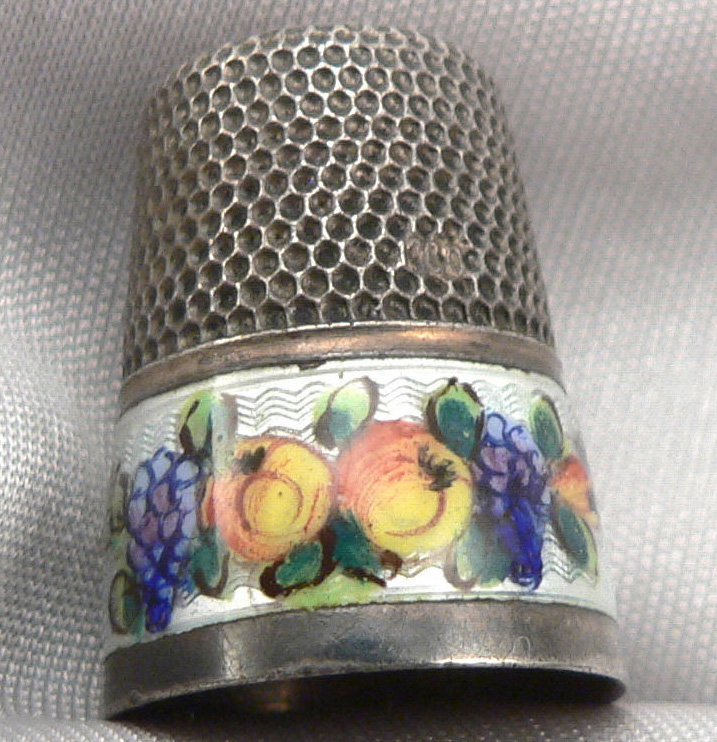
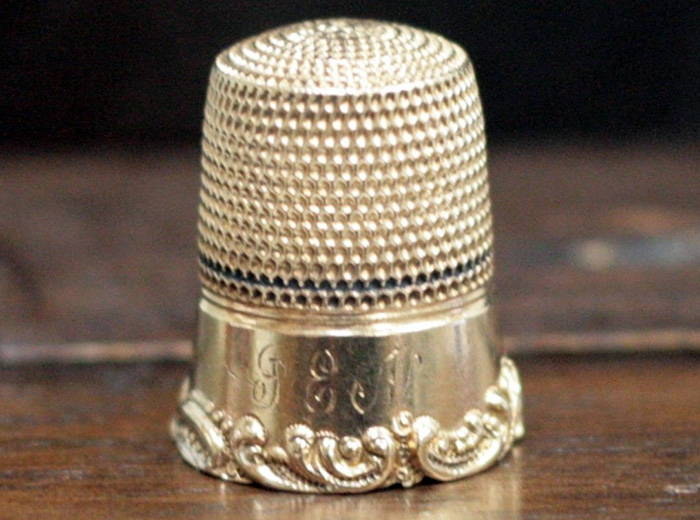
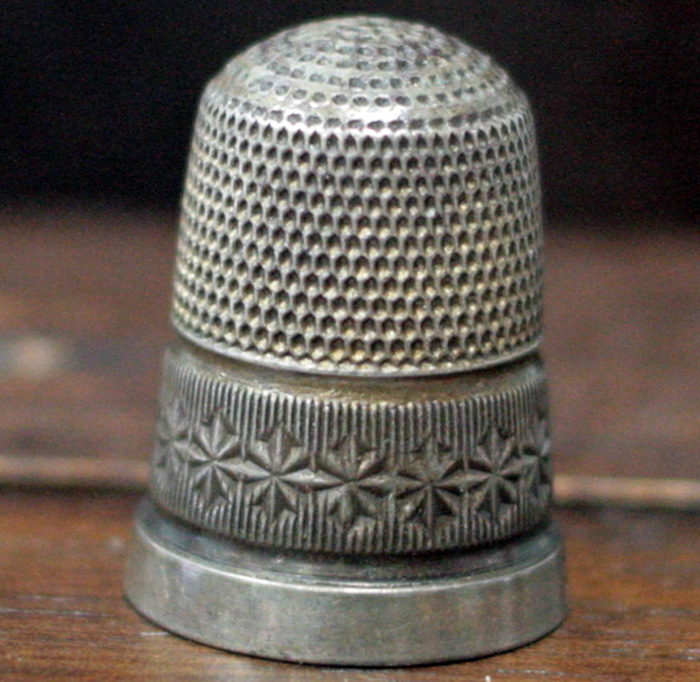
Gold and silver thimbles
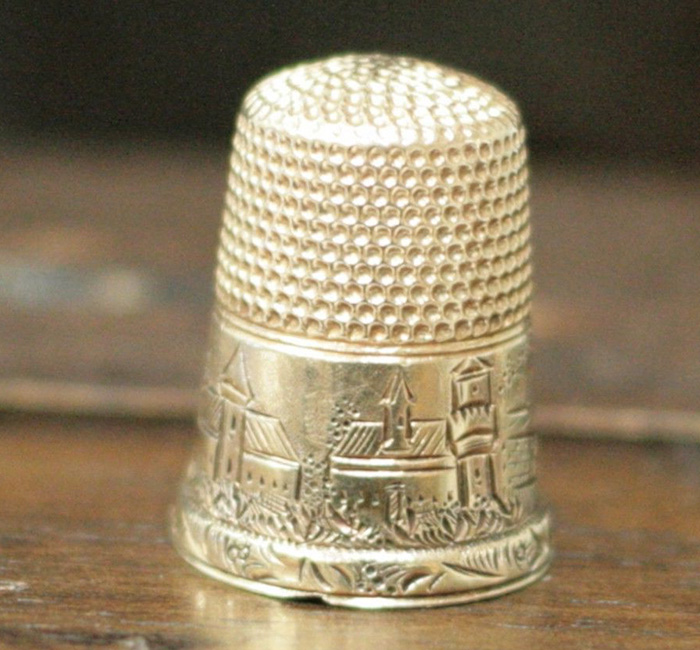
They were so carried away by the creation of thimbles that their production was no longer limited to metal or alloys. Thimbles were made of stone (rhinestone, amber), glass, leather, animal horns, turtle shell, mother-of-pearl, porcelain, clay, wood, and even dense fabric. Of course, some of them were just objects that adorned the interior, they were called objets de virtue - cute trifles, but they were a wonderful gift for a woman.Among them were porcelain thimbles, decorated with pictures of beautiful ladies with gallant gentlemen.
In the 18th century, these thimbles were especially popular. At that time, silver filigree thimbles decorated with enamel were also in great demand. In general, thimbles became more elegant and slender during this period, recalling the grace and gallantry of the 18th century. In the late 18th and early 19th centuries, toy thimbles became very popular. Inside these thimbles were small bottles of perfume.
The mother-of-pearl thimbles created by the French masters were real works of art, they were made in a single copy, decorated with enamel inserts in the form of flowers or the name of the owner of the thimble. The creation of unique thimbles has led to their collecting. And in 1851, at an exhibition in the London Crystal Palace, an entire exposition was devoted to thimbles.
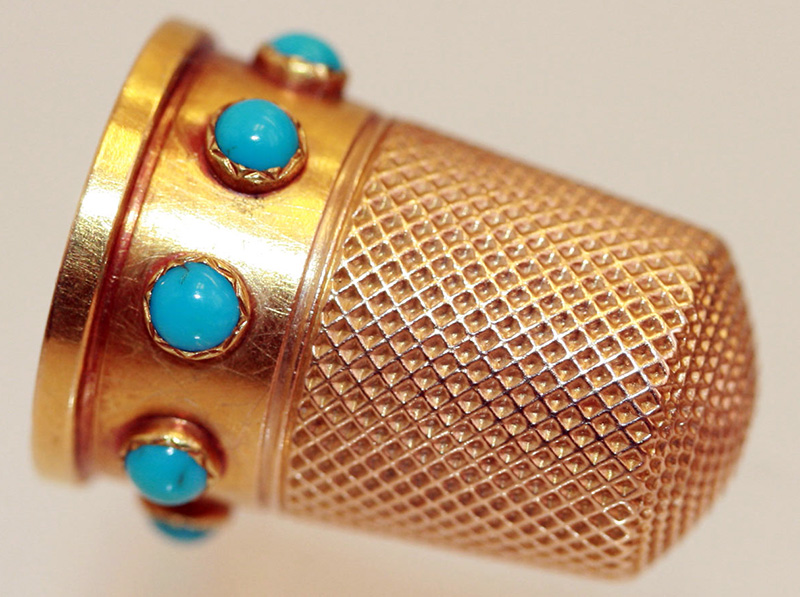
In England there are whole monographs with scientific articles on thimbles. In many countries there are museums of thimbles: in the Netherlands, Germany, Scotland, and in Canada, in Toronto, a monument has been erected to him. So, remaining a constant assistant to all tailors and embroiderers, the thimble has become a work of art.
In our 21st century, thimbles are decorated with a different theme, for example, portraits of famous politicians or plots of certain events of our day. There is a thimble in America decorated with a monument to Abraham Lincoln, and in England - with a portrait of Lady Diana. Such thimbles become a collector's dream or are souvenirs that can be purchased after visiting a particular country in which it was created.
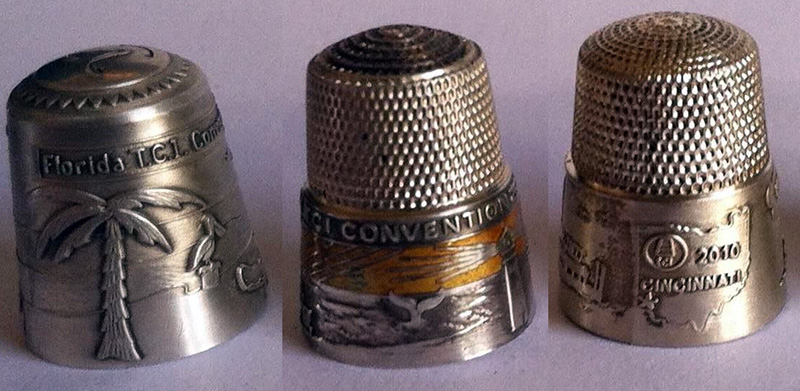
Such thimbles are decorated with stories from old legends, folk tales or famous historical events that took place in the country. For example, in Spain there are thimbles depicting a pilgrim monk, which explains to tourists that there is a shrine in the city of Santiago de Compostello that has been visited by pilgrims since the Middle Ages - the tomb of St. James, discovered in the 9th century. And in the same place, in Spain, there are thimbles with the image of bullfighting - a cruel and exciting spectacle.
What do you think you portrayed on your thimble in France? ... Yes, exactly a frog. There are also porcelain thimbles produced at the famous Limoges porcelain factory.
In Portugal, a cockerel is often depicted on souvenirs. After all, the rooster for Portugal has become a symbol of justice. There is a legend that one day a pilgrim from Galicia came to visit the holy places in Santiago de Compostello, and, being in a small town, was accused of false denunciation. He was threatened with execution. Then, taking the opportunity, he decided to justify his innocence before the judge. But the judge did not believe him, and, going to have supper with a roast rooster at that moment, he said that it was just as impossible to believe the pilgrim, just as it was impossible that this rooster would now come to life. And you guessed it, the roast rooster came to life and even crowed. The Pilgrim was saved. That is why the rooster has become a symbol of justice.
Who knows, if people remember this for so long and retell it, perhaps this is not just a legend ...
Finland's fine porcelain thimbles are used to depict beautiful landscapes of the country and girls in national Finnish costumes. Greek thimbles are decorated with the heroes of Hellas, Czech porcelain thimbles are decorated with roses, national ornaments and famous castles.

Now all countries love and produce porcelain souvenir thimbles. Particularly superior in variety of decor to Great Britain. In the subject of English thimbles, fragments of paintings by great artists, hunting scenes, there are thimbles with unusual shapes - in the form of houses, books, etc. There is also a Thimble Collectors' Club in England.
The thimble was and remains an important piece of tailor's art, with the help of which masterpieces are created. But he himself became not only a work of art, but also a witness to many events that took place in different countries.
If you have an ordinary simple thimble that does not attract attention, you still feel the need for it, it remains a faithful assistant.
Comments and Reviews
Add a comment
Rating news
Shades of clothing that make women look younger
What shades of hair make women younger: rules and photos
Funny wedding dresses - photos and ideas
12 most expensive down jackets for the winter
How to look 25 at 40: tips from supermodels
Beautiful schoolgirls
Anti-aging haircuts and hairstyles for women
Fashionable skirts for autumn and winter
Fashionable women's trousers for the cold season
Fashionable and stylish sandals for summer 2024
Spring-summer 2024
 Fashionable dresses and tops with thin spaghetti straps
Fashionable dresses and tops with thin spaghetti straps
 Bandana tops: how to wear stylishly and beautifully
Bandana tops: how to wear stylishly and beautifully
 How to put together the perfect men's wardrobe for the summer
How to put together the perfect men's wardrobe for the summer
 Fashionable shorts for spring-summer 2024
Fashionable shorts for spring-summer 2024
 Fashionable skirts for spring-summer 2024: a guide to online shopping
Fashionable skirts for spring-summer 2024: a guide to online shopping
 The most fashionable dresses spring-summer 2024: styles and colors
The most fashionable dresses spring-summer 2024: styles and colors
 Fashionable total look 2024: ideas of images and trends
Fashionable total look 2024: ideas of images and trends
